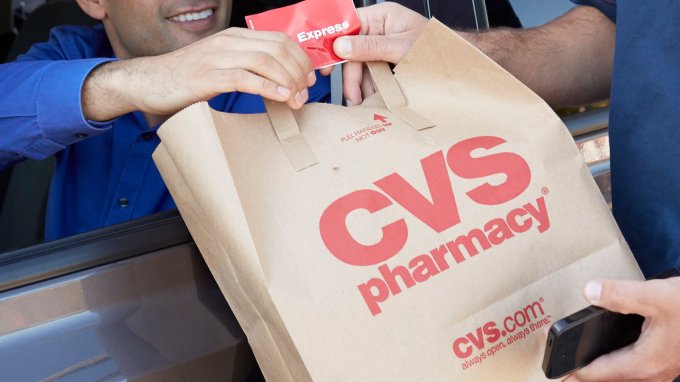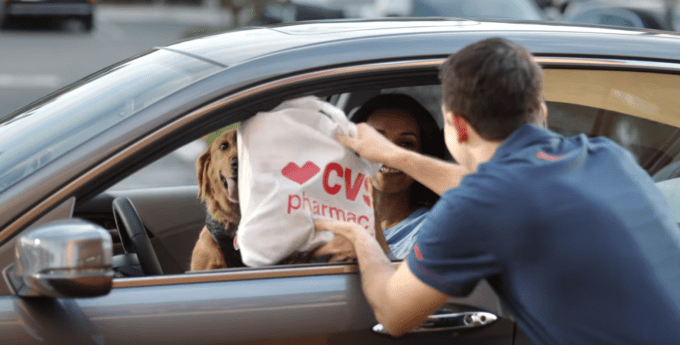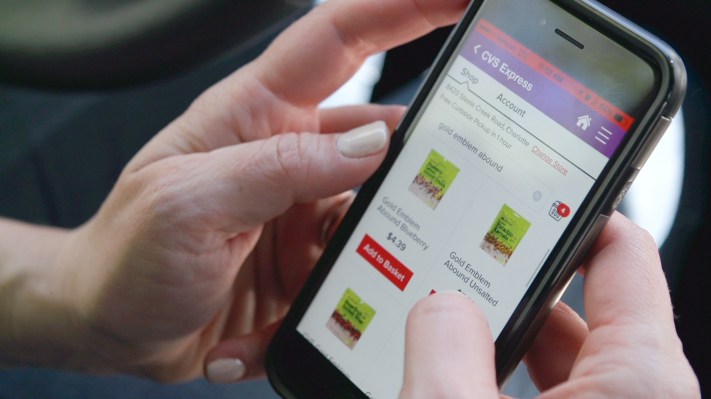As brick-and-mortar commerce continues to shift online — whether that’s to competitors like Amazon, through online ordering systems or into instant delivery apps — traditional retailers are looking for new ways to accommodate a customer base that now wants the increased convenience that comes with not having to park their cars, then wander around the store, cart in hand. Case in point: Today CVS announced an investment in Palo Alto-based shopping startup Curbside, along with plans to further roll out to CVS’s 9,600 retail pharmacy locations curbside pickups powered by the service.
Details of the investment were not disclosed, but it’s being described by the companies as a strategic partnership that will allow the two to work more closely together on expansions of the technology to other areas of CVS’s business, including its pharmacies and MinuteClinics.
CVS is also introducing its new curbside pickup option as a branded experience called “CVS Express,” which will be accessible within its own CVS mobile application. This is currently available in 350 locations in San Francisco, Charlotte, NC, and Atlanta, GA, allowing customers to select from close to 10,000 SKUs — or about three-quarters of CVS’s inventory, save for some locally distributed items.
The investment and launch of CVS Express follows what were before pilot tests with the startup in the San Francisco Bay Area, beginning last summer. In October, CVS decided to launch a co-branded experience with Curbside. And based on those trials, CVS opted to deepen its relationship with the startup.
While the retailer isn’t talking about how many of its customers have used the service to date, or what impact it has had on sales, it does see the promise and potential in the convenience mobile ordering and store pickup provides.

To use the service — which is also available from Curbside’s own mobile application — customers can place items in their basket while shopping from their smartphone, then head over to their local retail location where the order is ready for pickup within an hour.
There’s no additional fee for using this option, which benefits a range of customers, from busy professionals to moms with babies or small kids they don’t want to have to wrangle in the stores or even the mobility-impaired.
Orders are sent to CVS staff inside the stores when placed through Curbside’s mobile software running on a company-owned mobile device, and store employees then pick the items and fill customers’ bags. When they’ve finished, they mark the order as ready in the app, which alerts the user. And when the customer arrives, Curbside’s geo-location technology again alerts the staff who will bring the order out to the car.
Today, many of the top sellers are things like diapers and other baby items, or everyday necessities like milk.
CVS says it hasn’t had to increase headcount to accommodate mobile orders at this time — it’s just repurposing existing store staff.
In addition, what impressed CVS the most and encouraged its investment was that it saw customers returning to use this pickup service multiple times.
“The thing that got us so excited about our initial pilots over the last summer — and that has continued — is that we see that over two-thirds of our customers who try it actually repeat usage of it in a very short period of time,” says Brian Tilzer, Chief Digital Officer at CVS Health. “Customers like it a lot.”
Though CVS won’t talk about its repeat usage numbers, the Curbside app itself has seen repeat usage of 55 percent among a largely female customer base (65 percent). This is to some extent influenced by its work with retailers like Target.
Curbside today has relationships with other retailers, including Target (100 locations), Sephora, and Levi’s, and some Bay Area malls — in total reaching more than 500 stores across the U.S. However, CVS is the first to integrate Curbside’s software into its own mobile application.

This integration was made possible through help from CVS’s digital innovation lab in Boston, which allowed them to bring the technology to market in a matter of months.
For a traditional retailer, being able to adjust to the changes in the e-commerce landscape is a must, Tilzer explains.
“Moving at digital speed and innovating sort of like Silicon Valley companies innovate is a critical priority of ours at CVS,” he says. “The technology capabilities and the expertise that [Curbside CEO Jaron Waldman] and his team have are going to allow us to invent things that don’t exist in the name of a better pharmacy and healthcare experience.”
“The investment aligns our interests on this and allows us to collaborate more deeply,” he adds.
Curbside generates revenue through a SaaS model — meaning CVS pays a metered rate based on transaction volume when orders come in through the CVS app. Meanwhile, Curbside app orders work on more of an affiliate model.
To date, Curbside had raised $34.5 million prior to the CVS investment.
The CVS Express branded experience is now live in select markets, with further rollout planned for this year.
